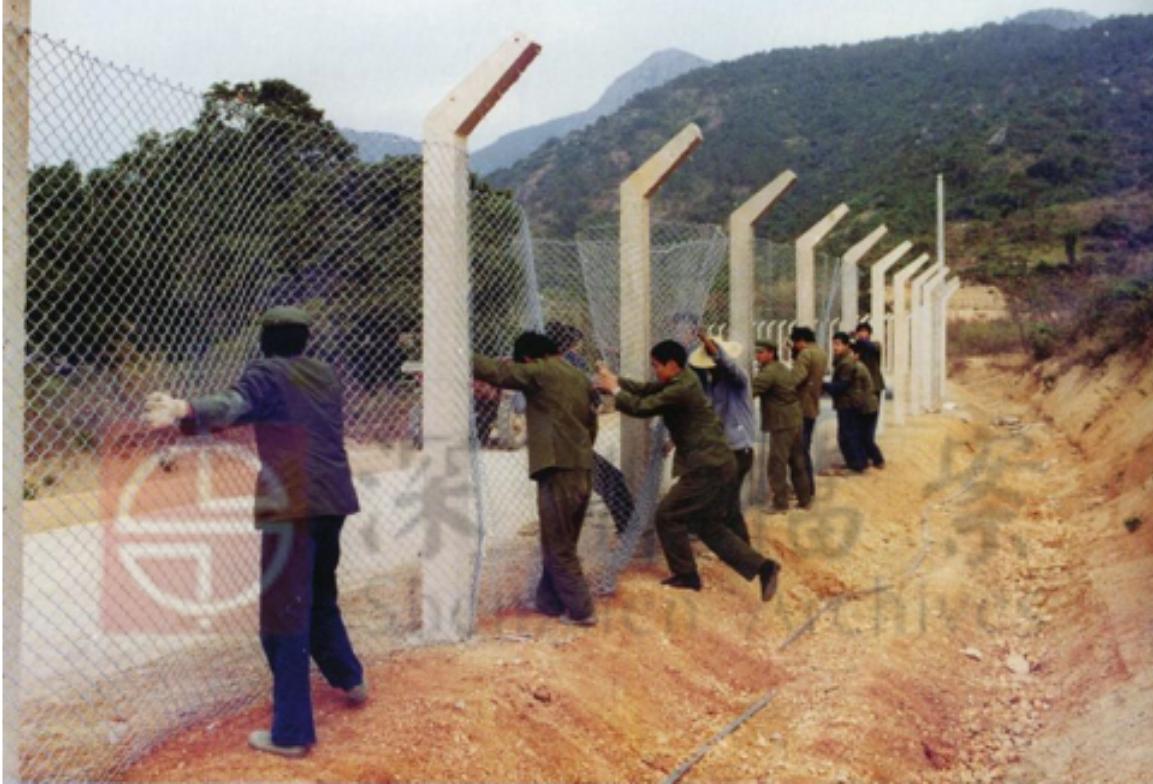
对深圳人来说,“二线关”或许是一道年代的分水岭——它既是“老深圳”们心中难以忘怀的记忆,也是“新深圳”们仅略有耳闻甚至闻所未闻的存在。“二线关”其实是一条特区管理线,正是这条管理线,将特区分成了特区内和特区外,也就是俗称的关内和关外。
For Shenzheners, the phrase “Shenzhen Special Economic Zone control line” bears different meanings. For older Shenzheners, it is a part of their unforgettable memories of the city and for newer Shenzheners, it may have been heard in passing or not at all. The control line is actually a boundary line of the Shenzhen Special Economic Zone, which divided Shenzhen into two parts, namely “guannei” (the area inside the special economic zone) and “guanwai” (the area outside the special economic zone).
那么,这条特区管理线的建设又经历了怎样的过程呢?且听小i为您道来。
Then, what was the process involved in creating the control line?
1981年召开的广东、福建两省经济特区工作会议提出,深圳经济特区要尽快建立特区与非特区的分界线。
The work meeting on the special economic zones in Guangdong and Fujian provinces was held in 1981 and proposed that the Shenzhen Special Economic Zone should establish a boundary line between the special and non-special zones as soon as possible.
1982年2月,深圳市二线建设指挥部成立。同年6月,国务院批准同意《广东深圳市经济特区二线设防和管理方案意见的报告》,确定特区二线以“全线设防(不以天然屏障作为防线),严密控制,综合管理”为原则。
In February 1982, the special economic zone control line construction headquarters of Shenzhen was established. In June of the same year, the State Council approved the Report on the Opinions Regarding the Establishment and Management of the Control Line of the Special Economic Zone in Shenzhen, Guangdong Province,” ascertaining that the control line of the Shenzhen Special Economic Zone should be fully fortified (rather than just a natural barrier), strictly controlled and comprehensively managed.
6月,深圳经济特区管理线工程动工兴建。工程设防初步设计共分为85个单项工程,主要在进出特区与内地之间的背仔角、盐田、沙湾、布吉、白芒、南头6个公路口设置联检站,在姑婆角、大梅沙建造两个海上公安检查站,沿特区分界线内侧山脚,东起背仔角,西至南头安乐村海边修筑巡逻线,并在沿线架设铁丝网,铺设照明线、供电和通讯线路等。
In the same month, the construction project of the control line was initiated. The project was initially divided into 85 individual projects. Specifically, checkpoints were built in the junctions between the inland and Shenzhen, including Beizaijiao, Yantian, Shawan, Buji, Baimang and Nantou. Two marine public security checkpoints were built in Gupojiao and Dameisha. Starting from Beizaijiao in the east to the seashore of An’le Village of Nantou in the west, a patrol route was built along the inner foot of the mountain on the control line, with the construction of barbed wire fencing and the laying of lighting lines, power supply lines and communication circuits.

1984年,工人们架设深圳经济特区管理线。(图片由罗湖区档案馆提供)
In 1984, workers were erecting a section of barbed wire fencing on the control line of the Shenzhen Special Economic Zone. (Courtesy of the Luohu Archives.)
1984年7月,特区管理线基本建成,并自8月1日起试行管理。1985年3月13日,特区管理线建设工程经国家验收委验收合格并交付使用。1986年4月1日,经过三年多的建设,特区管理线正式启用,管理线全长为84.6公里,沿线设有17个检查站和23个耕作口。1992年至1993年,特区管理线更新、增建了隔离线8公里铁丝网(线网改为钢板网)及15公里网体基础墙。
In July 1984, the construction of the control line was basically completed and the trial management started from August 1. On March 13, 1985, the control line construction project was approved for use by the National Acceptance Committee. On April 1, 1986, after more than three years of construction, the control line, consisting of a total length of 84.6 kilometers, 17 checkpoints and 23 entrances for farming, was officially put into use. From 1992 to 1993, it was renewed and eight kilometers of barbed wire fencing (wire mesh was changed to steel plate mesh) and 15 kilometers of mesh foundation walls were added.
深圳经济特区管理线是许多“老深圳”心中难以忘怀的回忆,您又是否有着一些与它相关的回忆或故事呢?欢迎您留言分享,小 i 将在留言中选取三位幸运儿送出小礼物。
The control line of the Shenzhen Special Economic Zone is an unforgettable memory of many old Shenzheners. Do you have any memories or stories about it? Feel free to leave your comments and three lucky people who share their stories will receive gifts.

来源:深圳市档案馆、i深圳
Source: Shenzhen Archives, iShenzhen
编译:深圳政府在线、Shenzhen Daily、GDToday
Transedited by: Shenzhen Government Online, Shenzhen Daily, GDToday